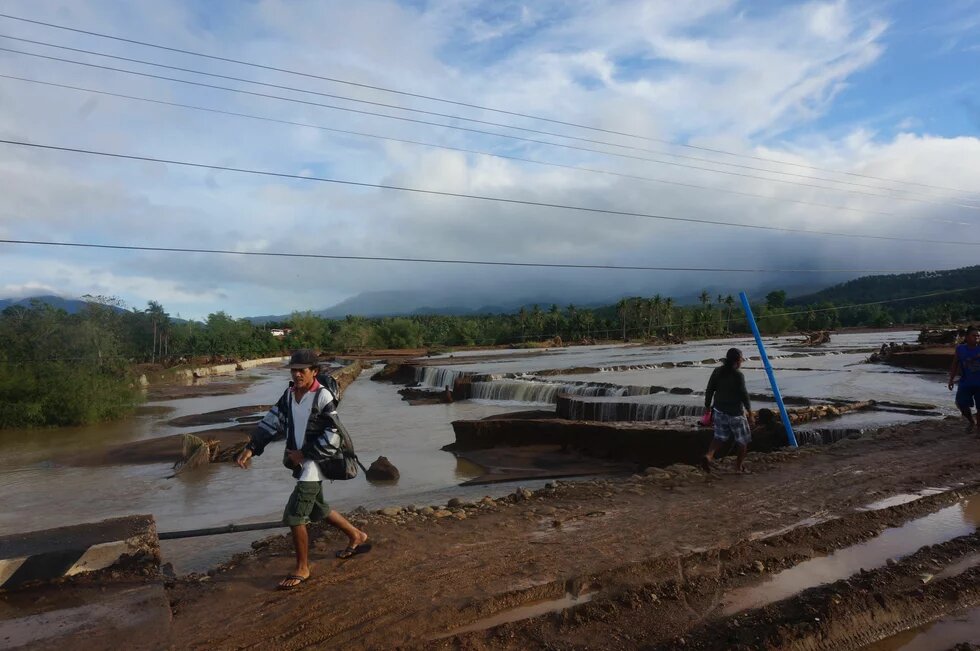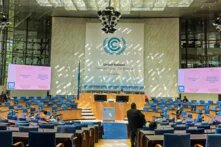
The existing climate finance arrangements are deceptive and harmful. Its lack of enforceability allows developed countries to evade real accountability, turning climate finance into a tool of soft power rather than reparative justice. Instead of delivering direct, grant-based, needs-responsive funding aligned with the priorities of climate-vulnerable nations, current systems often prioritize donor interests, market-based mechanisms, and opaque financial instruments. As a result, climate finance perpetuates existing inequalities: it reinforces dependency, burdens poorer countries with debt, and obscures the historical responsibility that underpins demands for climate reparations.

The Global Climate Finance Architecture is older than the climate negotiations themselves. In 1991, the Global Environment Facility (GEF) was established as an operating entity of the financial mechanism of the United Nations Framework Convention on Climate Change (UNFCCC).[1] Since then, other finance mechanisms have been put in place, such as the Green Climate Fund,[2] the Least Developed Countries Fund, the Special Climate Change Fund, the Adaptation Fund, and most recently, the Fund Responding to Loss and Damage (FRLD).[3] All these Funds were established under various agreements and are financed by various sources,[4] but all remain under the guidance of the UNFCCC. The FRLD[5] and the Green Climate Fund[6] are both under the guidance of the Conference of the Parties (COP) and the Conference of the Parties serving as the meeting of the Parties to the Paris Agreement (CMA).
However, this article is not about the existence of these funding mechanisms and the ways by which funding is secured. Instead, it questions the rationale for their establishment, bringing critical insight into how multilateral negotiations work to perpetuate the cycle of need and dependence that underpins colonial paradigms. Instead of assisting in the creation of systems of repair and resilience that are sustainable, current multilateral funding frameworks, we argue, have become a business model, creating reliance on funders rather than upholding sovereignty.
Climate finance in the UNFCCC
As in Loss and Damage frameworks, there is no official definition of climate finance.[7] Mainly, it is used to refer to “local, national or transnational financing - drawn from public, private and alternative sources of funding - that seeks to support mitigation and adaptation [and loss and damage] actions that will address climate change”.[8] This broad framework highlights the breadth of climate finance, as well as the variety of its scope, ranging from grants from developmental agencies, concessional and non-concessional loans from monetary institutions, and carbon taxes at the national and international levels, among others.[9]
While climate finance is widely recognised as critical in addressing the impacts of climate change and mitigating its consequences, this lack of an official definition allows developed countries to co-opt the operationalization of climate finance, as well as the timeframe for its implementation. Moreover, while the principle of Common but Differentiated Responsibilities and Respective Capabilities is meant to apply to the climate finance architecture, which means that highly industrialized countries that have emitted the most carbon emissions ought to act more,[10] the ambiguity in climate finance enables developed countries to selectively interpret and operationalize climate finance to suit their own political agendas and economic interests. By determining how, when, and to what extent funding is delivered, these actors maintain control over the process, often creating barriers for developing countries to access timely and adequate financial support.
Critique of existing climate finance models
This section will present three overarching critiques of the existing climate finance models and argue why they are not sufficient to meet the needs of both developing and Least Developed Countries (LDCs). These critiques will be discussed in seriatim:
1. Current levels of climate finance are inadequate
In 2009, during the 15th Conference of Parties (COP) in Copenhagen, developed countries committed to jointly mobilizing USD 100 billion per year by 2020 to address the needs of developing countries.[11] The amount can come from a variety of sources, including alternative sources of finance, and that new multilateral funding for adaptation would be delivered through effective and efficient fund arrangements.[12]
Decision 1/CP.21,[13] which adopts the Paris Agreement, reaffirmed this commitment through 2025. Paragraph 53 of the Decision notes that “the Conference of the Parties serving as the meeting of the Parties to the Paris Agreement shall set a new collective quantified goal from a floor of USD 100 billion per year, taking into account the needs and priorities of developing countries.”
In COP29 in Azerbaijan in 2024,[14] the new collective finance goal (NCQG) decision was negotiated, which called “on all actors to work together to scale up financing to developing countries for climate action from all public and private sources to at least USD 1.3 trillion per year by 2035.” It also set a goal of at least USD 300 billion per year by 2035 for developing countries’ climate action.
This decision garnered a lot of criticism, particularly from civil society and grassroots communities, especially considering that since 2009, the annual goal was met only once, in 2022,[15] with developed countries mobilising a total of USD 115.9 billion in climate finance. Even so, the quality of finance remained in question. First, research revealed that a substantial percentage of the amount came from existing development aid, which undermines demands from developing countries that climate finance should be “new and additional” – this means that existing developmental aid was merely “relabelled” as climate finance to reach the threshold.[16] Second, much of the fund came in the form of loans rather than grants, which traps developing countries into a culture of entrenched vulnerability. Loans, as will be discussed further in the subsequent section, tend to be even more harmful for developing countries.
Further, the new goal of USD 300 billion, triple the original goal, is widely criticized as grossly inadequate to meet the needs of developing countries and communities. In the lead-up to the Azerbaijan COP, academics, researchers, and civil society noted that what was needed in terms of financing was in the trillions, and that USD 300 billion was a tiny percentage of what is actually necessary to adapt to the ever-growing pressures of climate change.[17]
In the Loss and Damage conversation, climate finance commitments are equally dire. During the 7th meeting of the Fund Responding to Loss and Damage (FLRD) Board which took place from 7-9 October 2025 in Manila, the Barbados Implementation Modalities (BIM) was agreed upon. The BIM’s goal is to finance country-led initiatives to address climate-induced loss and damage[18] through the disbursement of USD 250 million through to the end of 2026 on an initial set of interventions to help developing countries.
As in the NCQG, two issues have been immediately highlighted by civil society. First, there remains to be a massive gap between developing country needs and what has been pledged by developed countries. There is also a further discrepancy as to what has been pledged and what has been actually contributed.[19] Second, the creation of the Modality (which will receive proposals from developing countries) will replicate the traditional model of other funds such as the Green Climate Fund, which is the very model that civil society aims to move away from through their claims for direct access.[20]
2. Existing climate finance arrangements are deceptive and harmful
Issues around the breadth and scope of climate finance are but one symptom of an overarching issue, which is the fact that existing climate finance arrangements are deceptive and harmful. Beyond being couched in seemingly benevolent terms, the kinds of climate finance often permitted by the international climate finance architecture are either onerous (i.e. they come in the form of loans) or not-fit-for-purpose. Worse, they are not actionable and do not create mandatory and binding obligations. For instance, no one has been held responsible for the refusal by developed countries to mobilize the USD 100 billion finance in the 14 years they have failed to do so.
This lack of enforceability allows developed countries to evade real accountability, turning climate finance into a tool of soft power rather than reparative justice. Instead of delivering direct, grant-based, needs-responsive funding aligned with the priorities of climate-vulnerable nations, current systems often prioritize donor interests, market-based mechanisms, and opaque financial instruments. As a result, climate finance perpetuates existing inequalities: it reinforces dependency, burdens poorer countries with debt, and obscures the historical responsibility that underpins demands for climate reparations.
Nowhere is this more explicit than in the Loss and Damage negotiations. Initially a scheme proposed by Vanuatu and other small island states in 1991 for the provision of financial resources to countries impacted by sea level rise, it was not until 2022 during the COP in Egypt that the Fund was created.[21] Even then, it was a mechanism that diluted historical polluters’ responsibility, as the Fund did not call for mandatory contributions, and instead encouraged developed countries to contribute money towards the Fund. This is justified through par. 51 of Decision 1/CP.2[22] when it notes that Parties agree “that Article 8 of the Agreement” (which refers to the Loss and Damage provisions) “does not involve or provide for any liability or compensation.”
This wording is intentional: while Loss and Damage has made its way into the global climate negotiations, its strength and scope lie not in historical acknowledgment of climate harms, nor equity or justice, but in the mercy and goodwill of developed states. This ahistorical view of climate finance puts aside the ways that colonialism, industrialization, extractivism, and capitalism have exacerbated vulnerabilities and risks in developing nations.
Carbon offsets are another example. Their design and their implementation are saturated with market-based language. Terms like “cost efficiency,” “net-zero,” and “investment opportunities” dominate the discourse. This technocratic vocabulary masks the fact that carbon offsetting is not a neutral tool but a mechanism that turns the climate crisis into a business model – one that will be addressed through technocratic solutions.
Again, this framing is not accidental. By embedding climate actions within the logic of the market, it becomes easier for wealthier countries (and corporations) to reposition themselves as buyers of solutions, rather than perpetrators of harm. Offsets allow polluters to maintain business-as-usual while outsourcing responsibility, often to communities in the Global South who gain little agency in the process and have less autonomy in the decision-making. In doing so, carbon markets replace climate finance, ideally reparative, with transactions that carry neither historical memory nor binding obligations.
Moreover, this commodification of the climate crisis obscures deeper questions, which this article seeks to highlight: who caused the damage? Who has benefited from these costs? And why is short-term profitability, not long-term justice, at the center of these conversations?
Perhaps another question: if it is not profitability and market logics that bolster climate finance conversations, then why do loans take up a huge part of financing, and why is there a lack of willingness to grant unconditional financial resources to developing countries, even if they have contributed the least to emissions?
3. Climate finance architecture lacks discussions on systems of repair and sovereignty
It is argued, therefore, that the current climate finance architecture replicates business logics that are incompatible with the demands of equity and justice. Climate finance remains entangled within the larger capitalistic system, thereby limiting it from becoming a truly equitable mechanism that assists vulnerable countries and communities in mitigating, adapting to, and responding to losses and damages.
At its core, the present climate finance system is structured around managerialism and control, not mutual responsibility or autonomy. This is evident in how funding is typically designed, administered, and allocated. Recipient country sovereignty is hardly highlighted, as is their right to determine what justice and adaptation should look like. Instead, financial flows are conditioned on external criteria, technocratic assessments, and burdensome reportorial requirements that often reflect donor priorities more than local needs.
Even supposedly “innovative” mechanisms, such as green bonds or blended finance, are situated within frameworks that primarily de-risk private investment rather than ensure reparative outcomes. While they are often lauded for their scalability and investor appeal, their benefits rarely accrue equitably.
Systems of repair and sovereignty are largely absent in these conversations and finance arrangements. For the reparations, there are very few, if any, models that seek to redress past and ongoing harm through grant-based and community-led funding, a system that supposedly the Loss and Damage Fund would respond to, but is currently unable to achieve. For the issue of sovereignty, there are also no climate finance arrangements where sovereignty in all forms – political, epistemological, and cultural – is upheld and respected. True sovereignty in climate finance means not just being on the receiving end of funds, but being able to define the terms, conditions, timelines, and purpose of the funds, without external imposition or pressure.
Climate justice and market logics: inherently incompatible?
The climate finance architecture must be rooted in reparative logic: one that acknowledges the asymmetrical benefits extracted by Global North countries from centuries of carbon-intensive development, and the asymmetrical burdens that are now borne by those in the Global South. This means not just adjusting flows of capital, but radically rethinking who designs, governs, and advantages from climate finance systems.
Ultimately, what is needed is a transition from a top-down system to one that is bottom-up. This includes just mandatory financing commitments that transfer authority, power, and resources to those who have been systematically (and historically) excluded.
___
Jameela Joy Reyes is a climate justice activist and lawyer. She is currently a Policy Officer with the Grantham Research Institute working on climate law and evidence, as well as reparations and Loss and Damage, a Technical Advisor of the Klima Center of Manila Observatory and a Research Assistant at the University of Warwick on critical climate finance and equitable policy.
Francis Uldric San Juan is a climate researcher specializing in loss and damage, climate education, and the decolonization of climate science and sustainable development.
Disclaimer: This published work was prepared with the support of the Heinrich Böll Stiftung. The views and analysis contained in the work are those of the author and do not necessarily represent the views of the foundation. The author is responsible for any liability claims against copyright breaches of graphics, photograph, images, audio, and text used.
[1] The Global Climate Finance Architecture: https://climatefundsupdate.org/wp-content/uploads/2021/03/CFF2-ENG-2020-Digital.pdf (last access 4 November 2025)
[2] GCF at COP29 summary: https://www.greenclimate.fund/news/gcf-cop29-summary (last access 4 November 2025)
[3] Fund for responding to Loss and Damage: https://climatefundsupdate.org/the-funds/fund-for-responding-to-loss-and-damage/ (last access 4 November 2025)
[4] The Global Climate Finance Architecture (Ibid.)
[5] United Nations Climate Change: https://unfccc.int/fund-for-responding-to-loss-and-damage (Last access 10 November 2025)
[6] United Nations Climate Change: https://unfccc.int/process/bodies/funds-and-financial-entities/green-climate-fund(Last access 10 November 2025)
[7] Intergovernmental Panel on Climate Change: https://www.ipcc.ch/report/ar6/wg3/downloads/faqs/IPCC_AR6_WGIII_FAQ_Chapter_15.pdf(Last access 10 November 2025)
[8] United Nations Framework Convention on Climate Change: https://unfccc.int/topics/introduction-to-climate-finance(Last access 10 November 2025)
[9] United Nations Development Programme: https://climatepromise.undp.org/news-and-stories/what-climate-finance-and-why-do-we-need-more-it(Last access 10 November 2025)
[10] United Nations: https://www.un.org/en/climatechange/raising-ambition/climate-finance(Last access 10 November 2025)
[11] The UK and the US$100 billion climate finance goal: https://commonslibrary.parliament.uk/research-briefings/cbp-9999/ (Last access 4 November 2025)
[12] Background note on the USD 100 billion goal in the context of UNFCCC process, in relation to advancing on SDG indicator 13.a.1: https://unstats.un.org/sdgs/tierIII-indicators/files/13.a.1_Background.pdf (Last access 4 November 2025)
[13] Report of the Conference of the Parties on its twenty-first session, held in Paris from 30 November to 13 December 2015: https://unfccc.int/resource/docs/2015/cop21/eng/10a01.pdf#page=2 (Last access 4 November 2025)
[14] Baku Conference Sets New Collective Climate Finance Goal: https://www.iisd.org/articles/insight/baku-conference-sets-new-collective-climate-finance-goal (Last access 4 November 2025)
[15] Climate Finance and the USD 100 billion goal: https://www.oecd.org/en/topics/climate-finance-and-the-usd-100-billion-goal.html (Last access 4 November 2025)
[16] Rich countries met $100bn climate-finance goal by ‘relabelling existing aid’: https://www.carbonbrief.org/rich-countries-met-100bn-climate-finance-goal-by-relabelling-existing-aid/ (Last access 4 November 2025)
[17] Poorer nations need $1tn a year by 2030 in climate finance, top economists find: https://www.theguardian.com/environment/2024/nov/14/wealthy-countries-must-invest-1tn-a-year-by-2030-for-climate (Last access 4 November 2025)
[18] Loss and damage fund gearing up to deliver early support: https://climateanalytics.org/comment/loss-and-damage-fund-gearing-up-to-deliver-early-support (Last access 4 November 2025)
[19] What Happened at the Seventh Meeting of the Board of the Fund for Responding to Loss and Damage: A Rapid Reaction: https://www.lossanddamagecollaboration.org/resources/what-happened-at-the-seventh-meeting-of-the-board-of-the-fund-for-responding-to-loss-and-damage-a-rapid-reaction (Last access 4 November 2025)
[20] What Happened at the Seventh Meeting of the Board of the Fund for Responding to Loss and Damage: A Rapid Reaction (Ibid.)
[21] What is The Loss and Damage Fund? https://urbact.eu/news/what-loss-and-damage-fund (Last access 4 November 2025)
[22] Decision 1/CP.21: https://unfccc.int/files/home/application/pdf/decision1cp21.pdf (Last access 4 November 2025)



